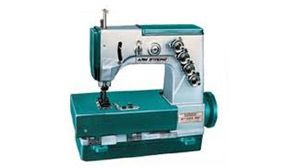
Woven Sack Sewing Machine
When looking to buy several types of machines; one of the most important facts that we, Manhattan Exports give you is to buy the best that you can afford. Giving this statement to our customers, we ensure that an extensive range of Woven Sack Sewing Machine, PP Woven Sack Sewing Machines, PP Bag Sewing Machine, FIBC Sewing Machine, Big Bag Sewing Machine, Jute Bag Sewing Machine, Belt Cutting Machine, Heavy Duty Machine, Heavy Duty Bag Closing Machine, and Note Book Sewing Machine is available with us only at cost effective solutions. We feel proud to be introduced ourselves as one of the top notch Exporters & Suppliers of the industry.
...more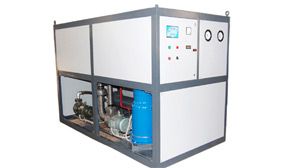
Water Chilling Plant
A water chiller[1] is a mechanical device used to facilitate heat exchange from water to a refrigerant in a closed loop system. The refrigerant is then pumped to a location where the waste heat is transferred to the atmosphere. In hydroponics, pumps, lights and ambient heat can warm the reservoir water temperatures, leading to plant root and health problems. For ideal plant health, a chiller can be used to lower the water temperature below ambient level; 68°F (20°C) is a good temperature for most plants. This results in healthy root production and efficient absorption of nutrients. In air conditioning, chilled water is often used to cool a building's air and equipment, especially in situations where many individual rooms must be controlled separately, such as a hotel. A chiller lowers water temperature to between 40° and 45°F before the water is pumped to the location to be cooled.
...more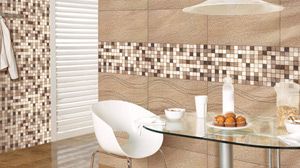
wall tiles and floor tiles
A tile is a manufactured piece of hard-wearing material such as ceramic, stone, metal, or even glass, generally used for covering roofs, floors, walls, showers, or other objects such as tabletops. Alternatively, tile can sometimes refer to similar units made from lightweight materials such as perlite, wood, and mineral wool, typically used for wall and ceiling applications. In another sense, a tile is a construction tile or similar object, such as rectangular counters used in playing games (see tile-based game). The word is derived from the French word tuile, which is, in turn, from the Latin word tegula, meaning a roof tile composed of fired clay.Tiles are often used to form wall and floor coverings, and can range from simple square tiles to complex mosaics. Tiles are most often made of ceramic, typically glazed for internal uses and unglazed for roofing, but other materials are also commonly used, such as glass, cork, concrete and other composite materials, and stone. Tiling stone is typically marble, onyx, granite or slate. Thinner tiles can be used on walls than on floors, which require more durable surfaces that will resist impacts.
...more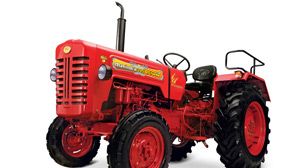
Tractor
A tractor is an engineering vehicle specifically designed to deliver a high tractive effort (or torque) at slow speeds, for the purposes of hauling a trailer or machinery used in agriculture or construction. Most commonly, the term is used to describe a farm vehicle that provides the power and traction to mechanize agricultural tasks, especially (and originally) tillage, but nowadays a great variety of tasks. Agricultural implements may be towed behind or mounted on the tractor, and the tractor may also provide a source of power if the implement is mechanised.The word tractor was taken from Latin, being the agent noun of trahere "to pull". The first recorded use of the word meaning "an engine or vehicle for pulling wagons or ploughs" occurred in 1901, displacing the earlier term "traction engine" (1859).
...more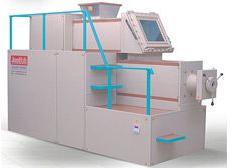
soap plant machinery
In chemistry, soap is a salt of a fatty acid. Consumers mainly use soaps as surfactants for washing, bathing, and cleaning, but they are also used in textile spinning and are important components of lubricants.Soaps for cleansing are obtained by treating vegetable or animal oils and fats with a strongly alkaline solution. Fats and oils are composed of triglycerides; three molecules of fatty acids attach to a single molecule of glycerol. The alkaline solution, which is often called lye (although the term "lye soap" refers almost exclusively to soaps made with sodium hydroxide), brings about a chemical reaction known as saponification.In this reaction, the triglyceride fats first hydrolyze into free fatty acids, and then these combine with the alkali to form crude soap: an amalgam of various soap salts, excess fat or alkali, water, and liberated glycerol (glycerin). The glycerin, a useful by-product, can remain in the soap product as a softening agent, or be isolated for other uses.Soaps are key components of most lubricating greases, which are usually emulsions of calcium soap or lithium soap and mineral oil. These calcium- and lithium-based greases are widely used. Many other metallic soaps are also useful, including those of aluminium, sodium, and mixtures of them. Such soaps are also used as thickeners to increase the viscosity of oils. In ancient times, lubricating greases were made[by whom?] by the addition of lime to olive oil.
...more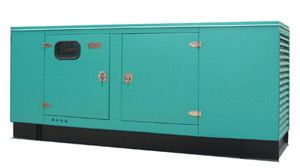
Silent Diesel Generator Set
An engine-generator is the combination of an electrical generator and an engine (prime mover) mounted together to form a single piece of equipment. This combination is also called an engine-generator set or a gen-set. In many contexts, the engine is taken for granted and the combined unit is simply called a generator. A diesel generator is the combination of a diesel engine with an electric generator (often an alternator) to generate electrical energy. This is a specific case of engine-generator. A diesel compression-ignition engine often is designed to run on fuel oil, but some types are adapted for other liquid fuels or natural gas. Diesel generating sets are used in places without connection to a power grid, or as emergency power-supply if the grid fails, as well as for more complex applications such as peak-lopping, grid support and export to the power grid. Sizing of diesel generators is critical to avoid low-load or a shortage of power and is complicated by modern electronics, specifically non-linear loads. In size ranges around 50 MW and above, an open cycle gas turbine is more efficient at full load than an array of diesel engines, and far more compact, with comparable capital costs; but for regular part-loading, even at these power levels, diesel arrays are sometimes preferred to open cycle gas turbines, due to their superior efficiencies.
...more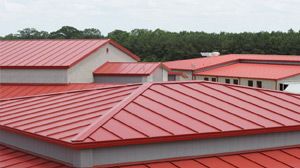
Roofing Sheets
Domestic roof construction is the framing and roof covering which is found on most suburban detached houses in cold and temperate climates. Such roofs are mostly built with timber, take a number of different shapes, and are covered with a variety of materials Modern timber roofs are mostly framed with pairs of common rafters or prefabricated wooden trusses fastened together with truss connector plates. Timber framed and historic buildings may be framed with principal rafters or timber roof trusses. Roofs are also designated as warm or cold roof depending on how they are designed and built with regard to thermal building insulation and ventilation. The steepness or roof pitch of a sloped roof is determined primarily by the roof covering material and aesthetic design. Flat roofs actually slope up to approximately ten degrees to shed water. Flat roofs on houses are primarily found in arid regions. In high wind areas, such as where a cyclone or hurricane may make landfall, the main engineering consideration is to hold the roof down during severe storms. Every component of the roof, as of course the rest of the structure, has to withstand the uplift forces of high wind speeds. This is accomplished by using metal ties fastened to each rafter or truss. This is not normally a problem in areas not prone to high wind. In the UK, a concrete tiled roof would normally have rafters at 600mm centers, roof battens at 300mm centers and ceiling joists at 400mm centers. The United States still uses imperial units of measurement and framing members are typically spaced sixteen or twenty-four inches apart. The roof framing may be interrupted for openings such as a chimney or skylight. Chimneys are typically built with a water diverter known as a cricket or saddle above the chimney. Flashing is used to seal the gap between the chimney and roofing material.
...more
Prefabricated Steel Structure shed
In structural engineering, a pre-engineered building (PEB) is designed by a PEB supplier or PEB manufacturer, to be fabricated using best suited inventory of raw materials available from all sources and manufacturing methods that can efficiently satisfy a wide range of structural and aesthetic design requirements. Within some geographic industry sectors these buildings are also called Pre-Engineered Metal Buildings (PEMB) or, as is becoming increasingly common due to the reduced amount of pre-engineering involved in custom computer-aided designs, simply Engineered Metal Buildings (EMB). Historically, the primary framing structure of a pre-engineered building is an assembly of I-shaped members, often referred as I-beams. In pre-engineered buildings, the I beams used are usually formed by welding together steel plates to form the I section. The I beams are then field-assembled (e.g. bolted connections) to form the entire frame of the pre-engineered building. Some manufacturers taper the framing members (varying in web depth) according to the local loading effects. Larger plate dimensions are used in areas of higher load effects. Other forms of primary framing can include trusses, mill sections rather than three-plate welded, castellated beams, etc. The choice of economic form can vary depending on factors such as local capabilities (e.g. manufacturing, transportation, construction) and variations in material vs. labour costs. Typically, primary frames are 2D type frames (i.e. may be analyzed using two-dimensional techniques). Advances in computer-aided design technology, materials and manufacturing capabilities have assisted a growth in alternate forms of pre-engineered building such as the tension fabric building and more sophisticated analysis (e.g. three-dimensional) as is required by some building codes. Cold formed Z- and C-shaped members may be used as secondary structural elements to fasten and support the external cladding. Roll-formed profiled steel sheet, wood, tensioned fabric, precast concrete, masonry block, glass curtainwall or other materials may be used for the external cladding of the building. In order to accurately design a pre-engineered building, engineers consider the clear span between bearing points, bay spacing, roof slope, live loads, dead loads, collateral loads, wind uplift, deflection criteria, internal crane system and maximum practical size and weight of fabricated members. Historically, pre-engineered building manufacturers have developed pre-calculated tables for different structural elements in order to allow designers to select the most efficient I beams size for their projects. However, the table selection procedures are becoming rare with the evolution in computer-aided custom designs. While pre-engineered buildings can be adapted to suit a wide variety of structural applications, the greatest economy will be realized when utilising standard details. An efficiently designed pre-engineered building can be lighter than the conventional steel buildings by up to 30%. Lighter weight equates to less steel and a potential price savings in structural framework.
...more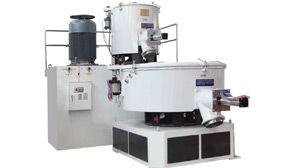
plastic auxiliary machine
The plastic forming machine (ma also called plastic molding machine) is developed on the basis of rubber machinery and metal die-casting machine. Since the polymer injection molding process and molding equipment in the 1870s, as an industry, plastic forming machine got rapid development until the 1930s, with the gradual commercialization of plastic molding equipment, injection molding and extrusion molding has become the most common industrialized processing methods. Blow molding is the third-largest plastic molding method after the injection molding and extrusion blow molding method, it is also the fastest development of plastic molding method.
...more
Kraft Paper
Kraft paper or kraft is paper or paperboard (cardboard) produced from chemical pulp produced in the kraft process. Sack kraft paper, or just sack paper, is a porous kraft paper with high elasticity and high tear resistance, designed for packaging products with high demands for strength and durability.Pulp produced by the kraft process is stronger than that made by other pulping processes; acidic sulfite processes degrade cellulose more, leading to weaker fibers, and mechanical pulping processes leave most of the lignin with the fibers, whereas kraft pulping removes most of the lignin present originally in the wood. Low lignin is important to the resulting strength of the paper, as the hydrophobic nature of lignin interferes with the formation of the hydrogen bonds between cellulose (and hemicellulose) in the fibers.Kraft pulp is darker than other wood pulps, but it can be bleached to make very white pulp. Fully bleached kraft pulp is used to make high quality paper where strength, whiteness and resistance to yellowing are important.
...more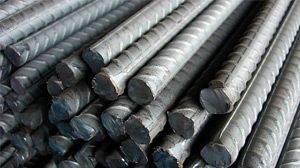
Iron Rod
Wrought iron, a non-ornamental iron used in building and heavy construction. Wrought iron is an iron alloy with a very low carbon (less than 0.08%) content in contrast to cast iron (2.1% to 4%). It has fibrous inclusions known as slag up to 2% by weight. It is a semi-fused mass of iron with slag inclusions which gives it a "grain" resembling wood, that is visible when it is etched or bent to the point of failure. Wrought iron is tough, malleable, ductile, corrosion-resistant and easily welded. Before the development of effective methods of steelmaking and the availability of large quantities of steel, wrought iron was the most common form of malleable iron.A modest amount of wrought iron was used as a raw material for refining into steel, which was used mainly to produce swords, cutlery, chisels, axes and other edged tools as well as springs and files. The demand for wrought iron reached its peak in the 1860s with the adaptation of ironclad warships and railways. However, as properties such as brittleness of mild steel improved, it became less costly and more widely available than wrought iron, whose usage then declined.Many items, before they came to be made of mild steel, were produced from wrought iron, including rivets, nails, wire, chains, rails, railway couplings, water and steam pipes, nuts, bolts, horseshoes, handrails, wagon tires, straps for timber roof trusses, and ornamental ironwork.Wrought iron is no longer produced on a commercial scale. Many products described as wrought iron, such as guard rails, garden furniture and gates, are actually made of mild steel. They retain that description because in the past they were wrought (worked) by hand.
...more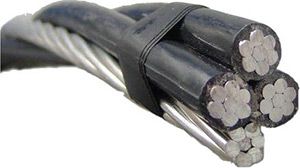
insulated aerial bunched cables
Aerial bundled cables (also aerial bundled conductors or simply ABC) are overhead power lines using several insulated phase conductors bundled tightly together, usually with a bare neutral conductor. This contrasts with the traditional practice of using uninsulated conductors separated by air gaps. This variation of overhead power lines utilizes the same principles as bundled conductors, except that they are closer together to the point of touching but each conductor is surrounded by an insulating layer (except for the neutral line). The main objections to the traditional design are that the multiple conductors are considered unappealing, and external forces (such as high winds) can cause them to touch and short circuit. The resultant sparks have been a cause of bushfires in drier climates. In the UK where some supplies to rural property are converted to PME/MEN from TT Earthing system concerns have been expressed that the lower conductor alone may be broken, (by high vehicle or falling tree for example) but with the upper phase conductors intact. This is a potentially dangerous fault condition. With ABC, a simultaneous disconnection of all conductors is more likely. In moister climates, tree growth is a significant problem for overhead power lines. Aerial bundled cables will not arc over if touched by tree branches. Although persistent rubbing is still a problem, tree-trimming costs can be reduced. Areas with large trees and branches falling on lines are a problem for aerial bundled cables as the line degrades over time. Due to the very large strain forces cracking and breaking insulation can lead to short circuit failures which can then lead to ground fires due to dripping of molten insulation. Low voltage ABC has already been developed in several countries across the globe and promises to be cheaper, safer, more reliable, require less tree clearing and pruning, be more aesthetic, be less labor intensive, require less maintenance and eliminate bushfires being initiated by conductor clashing.
...more
Hdpe Ropes
A rope is a group of yarns, plies, or strands that are twisted or braided together into a larger and stronger form. Ropes have tensile strength and so can be used for dragging and lifting, but are too flexible to provide compressive strength. As a result, they cannot be used for pushing or similar compressive applications. Rope is thicker and stronger than similarly constructed cord, line, string, and twine. Ropes made from metal strands are called wire rope.
...more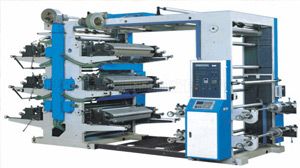
Flexo Printing Machine
Flexography (often abbreviated to flexo) is a form of printing process which utilizes a flexible relief plate. It is essentially a modern version of letterpress which can be used for printing on almost any type of substrate, including plastic, metallic films, cellophane, and paper. It is widely used for printing on the non-porous substrates required for various types of food packaging (it is also well suited for printing large areas of solid colour).
...more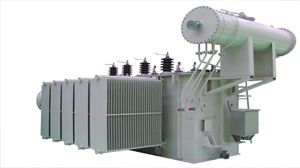
Distribution Transformers
A distribution transformer or service transformer is a transformer that provides the final voltage transformation in the electric power distribution system, stepping down the voltage used in the distribution lines to the level used by the customer. The invention of a practical efficient transformer made AC power distribution feasible; a system using distribution transformers was demonstrated as early as 1882.If mounted on a utility pole, they are called pole-mount transformers. If the distribution lines are located at ground level or underground, distribution transformers are mounted on concrete pads and locked in steel cases, thus known as pad-mount transformers.Distribution transformers normally have ratings less than 200 kVA, although some national standards can describe units up to 5000 kVA as distribution transformers. Since distribution transformers are energized for 24 hours a day (even when they don't carry any load), reducing iron losses has an important role in their design. As they usually don't operate at full load, they are designed to have maximum efficiency at lower loads. To have a better efficiency, voltage regulation in these transformers should be kept to a minimum. Hence they are designed to have small leakage reactance.
...more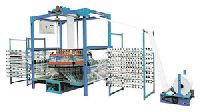
circular weaving machines
Circular knitting or knitting in the round is a form of knitting that creates a seamless tube. When knitting circularly, the knitting is cast on and the circle of stitches is joined. Knitting is worked in rounds (the equivalent of rows in flat knitting) in a spiral. Originally, circular knitting was done using a set of four or five double-pointed needles. Later, circular needles were invented, which can also be used to knit in the round: the circular needle looks like two short knitting needles connected by a cable between them.Longer circular needles can be used to produce narrow tubes of knitting for socks, mittens, and other items using the Magic Loop technique. Machines also produce circular knitting; double bed machines can be set up to knit on the front bed in one direction then the back bed on the return, creating a knitted tube. Specialized knitting machines for sock-knitting use individual latch-hook needles to make each stitch in a round frame.Many types of sweaters are traditionally knit in the round. Planned openings (arm holes, necks, cardigan fronts) are temporarily knitted with extra stitches, reinforced if necessary. Then the extra stitches are cut to create the opening, and are stitched with a sewing machine to prevent unraveling. This technique is called steeking.
...more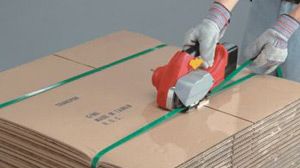
Box Strapping
Strapping, also known as bundling and banding, is the process of applying a strap to an item to combine, hold, reinforce, or fasten it. The strap may also be referred to as strapping. Strapping is most commonly used in the packaging industry.
...more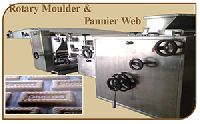
Biscuit Stacking Machine
A rotary moulder is a machine commonly in use for producing biscuit dough pieces from short doughs. The dough to be moulded is fed into the hopper and forces the dough into the cavities of the moulding roller which is made out of gun metal, uniformly engraved and coated with food grade Teflon. Excess dough is cleared with a knife, which is held by a holder made from tool steel, to ensure uniform filling. An adjustable rubber roller conveying the discharge cotton web presses it uniformly against the moulding roller for perfect transfer of molded pieces from the moulding roller on to the web.
...more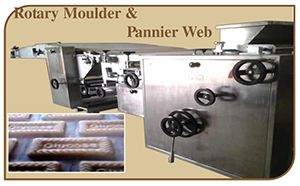
Biscuit Making Machine
Soft Dough Biscuit Equipment A rotary moulder is a machine commonly in use for producing biscuit dough pieces from short doughs. The dough to be moulded is fed into the hopper and forces the dough into the cavities of the moulding roller which is made out of gun metal, uniformly engraved and coated with food grade Teflon. Excess dough is cleared with a knife, which is held by a holder made from tool steel, to ensure uniform filling.An adjustable rubber roller conveying the discharge cotton web presses it uniformly against the moulding roller for perfect transfer of molded pieces from the moulding roller on to the web. The purpose of three drives is, speed of the forcing roller influences the density of dough forced in to the moulding cavity. The speed of the die roller influences the production speed. The discharge web speed influences the shape of the biscuits produced along the web or across the web. Features Works various width up to 1500mm 10.2" to 16" dia for die roller Individual drives for forcing roller and die roller. Stainless steelcovers,doors and hopper Hygenic design Cross conveyor under scrapping knife
...more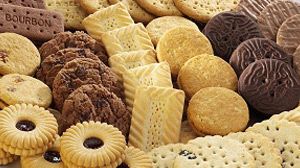
Assorted Biscuits
BISCUITS. The word "biscuit" is derived from the Latin panis biscoctus, "twice-baked bread." From the sixteenth to the eighteenth century, forms of the word included besquite and bisket. Similar forms are noted in many European languages. "Biscuit" covers a wide range of flour baked products, though it is generally an unleavened cake or bread, crisp and dry in nature, and in a small, thin, and flat shape. It has a number of cultural meanings. In the United States, a biscuit is a soft, thick scone product or a small roll similar to a muffin. The British biscuit is equivalent to the American cookie and cracker. These latter terms are relatively modern. "Cookie" comes from the eighteenth-century Dutch word koekje, a diminutive of koek (cake). "Cracker" is a North American term that also came into use in the eighteenth century, connoting the sound of the wafer as it was chewed or broken (at this time, "cracker" was also used to mean a firecracker or a noisy person or object). Biscuits have evolved from different aspects of baking practices such as tarts, pastries, short cakes, and sugar confectionery. They have given rise to the wafer, macaroon, cracker, sandwich, snap, gingerbread, honey cake, rusk, and water biscuit. Some, like the wafer, were baked in the Middle Ages; others are of more recent origin, such as the "fancy biscuit," an early-nineteenth-century invention of British bakers that led to the development of a biscuit industry, which was later exported throughout the world. Biscuits are divided into two main groups. The first are plain or have a savory flavoring. The second type are sweet or semi-sweet in character. Biscuits are made from a number of ingredients. Flour is the most basic and important. Different types give a range of textures and crispness. Wholemeal wheat flour is used in the "digestive," "sweetmeal," or "wheat-meal" type of biscuits. Oatmeal forms the basis of oatmeal biscuits. Rice flour and corn flour add flavor. Fats give the biscuits their "shortness." Butter and lard are the main fats, though these are augmented by vegetable and other refined fats. For fancy biscuits, sugar is an important ingredient, and introduces a range of tastes. It is added in several forms: processed as caster and Demerara sugars, syrups, honey, and malt extract. These have a range of consistencies and may help to bind together other ingredients. Aerating and raising ingredients, such as baking powder (bicarbonate of soda and tartaric acid), make the biscuit light. Flavorings are also added. These include dried fruit, nuts, chocolate (powder or chips), spices, herbs, and flavoring essences such as vanilla. The dry ingredients are bound together with eggs and milk (fresh, condensed, or dried) or water. Biscuits have a high energy content, ranging from 420 to 510 kcal per 100 g.
...more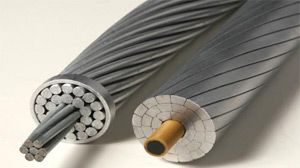
Aluminium Conductor (ACSR)
Aluminium conductor steel-reinforced (ACSR) is a type of high-capacity, high-strength stranded conductor typically used in overhead power lines. The outer strands are high-purity 1350 or 1370 aluminium alloy, chosen for its excellent conductivity, low weight and low cost. The center strands are of steel for the strength required to support the weight without stretching the aluminium due to its ductility. This gives the conductor an overall high tensile strength.ACSR cable still depends on the tensile strength of the aluminium; it is only reinforced by the steel. Because of this, its continuous operating temperature is limited to 75 °C (167 °F), the temperature at which aluminium begins to anneal and soften over time. Cable which relies entirely on the steel for strength, and so can be used at temperatures up to 250 °C (480 °F), is called aluminium-conductor steel-supported (ACSS).ACSR cables are available in several specific sizes, with multiple center steel wires and correspondingly larger quantities of aluminium conductors. For example, an ACSR cable with 72 aluminium conductors that requires a core of 7 steel conductors will be called 72/7 ACSR cable. Cables generally range from #6 AWG ("6/1"—six outer aluminum conductors and one steel reinforcing conductor) to 2167 kcmil ("72/7"—seventy-two outer aluminum conductors and seven steel reinforcing conductors)The higher resistance of the steel core is of little consequence to the transmission of electricity in large diameter conductors since it is located below the skin depth (11 or 12 mm for 60 or 50 Hz[5]) where only a small amount of AC current flows.
...moreBe first to Rate
Rate ThisOpening Hours